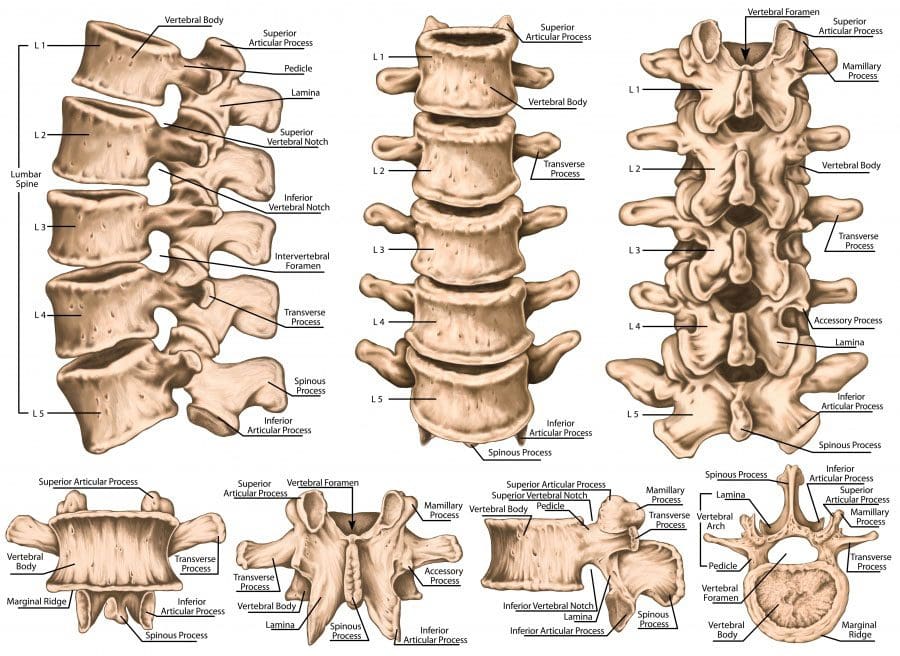- Sciatica
- Numera
- Paraparesis – slight paralysis
- Spinal deformity – scoliosis, kyphosis
- fiva

Mataupu
Benign – Noncancerous
Aneurysmal Bone Cysts
Aneurysmal bone cysts or ABCs usually cause pain and swelling. They can be large and typically affect children and adolescents.Eosinophilic Granuloma
This type of spinal tumor usually develops in the vertebral bodies of children and adolescents. If the tumor is systemic it is called histiocytosis X. However, these tumors rarely lead to vertebral collapse and paraparesis. And also rarely but on occasion, they can heal spontaneously on their own.
Giant Cell Tumor
This type of spinal tumor affects children, adolescents, and young adults. They can be found around the cervical, thoracic, or lumbar segments of the spine, but are more common in the sacrum region.hemangioma
Hemangiomas develop most often in the thoracic or middle back. These affect adults and are known to be vascular masses that are progressive ma can cause vertebral collapse and slight paralysis.Osteoblastoma
nei tumors can be large, aggressive, and painful. They affect children and adolescents. They can sometimes cause spinal deformity and paralysis.Osteochondroma
This a slow-growing spinal tumor that comes from cartilage and usually affects adolescents. It is uncommon and typically found in the posterior or rear of the spine.Osteoid Osteoma
A very small bone tumor that is less than 2 cm. It typically affects adolescents. It is known to cause night pain and can result in spinal deformity.
Malignant – Cancerous
Chordoma
O lea lava typically seen in adults. About 50% involves the sacrum, but it can affect other regions of the spine. These tumors usually require aggressive treatment.Chondrosarcoma malo
This tumor affects the spinal cartilage in middle-aged adults. It grows slowly but can be dangerous. Aggressive medical treatment is required.Ewing/Ewing’s Sarcoma
An aggressive spinal tumor that affects adolescents and young adults. In certain cases, it can metastase.Lymphoma
Lymphoma can present in one or more vertebral bodies. It affects middle-aged and older adults. The faiga faʻapitoa can sometimes be involved.Osteosarcoma
This is a bone cancer that develops in adolescents and middle-aged adults. It can metastasize and require aggressive medical treatment.Plasmacytoma
Plasmacytoma typically presents in middle-aged and older adults. They usually present in the pedicle and vertebral body and can cause paraparesis.
Neck and Low Back Pain Treatment
Dr. Alex Jimenez's Blog Post Tuuese
O le lautele o a matou faʻamatalaga e faʻatapulaʻaina i le fomaʻi, musculoskeletal, faʻamalositino vailaʻau, soifua maloloina, ma maaleale soifua maloloina mataupu ma / pe faʻatino vailaʻau tala, mataupu, ma talanoaga. Matou te faʻaaogaina le soifua maloloina ma le soifua maloloina faʻataʻitaʻiga e togafitia ma lagolago ai le tausiga mo manuʻa poʻo faʻaletonu o le musculoskeletal system. O a matou pou, mataupu, mataupu, ma malamalamaaga e aofia ai mataupu tau falemaʻi, mataupu ma mataupu e fesoʻotaʻi ma lagolago tuusao pe le tuʻusaʻo ia tatou falemaʻi lautele o galuega. * Ua faia e le matou ofisa se taumafaiga talafeagai e tuʻuina atu lagolago lagolago ma ua faʻailoa mai le talafeagai suʻesuʻega suʻesuʻega poʻo suʻesuʻega e lagolagoina a matou pou. Matou te faia foi kopi o lagolago suʻesuʻe suʻesuʻega avanoa i le laupapa ma pe lautele pe a talosagaina. Matou te malamalama o matou aofia ai mataupu e manaʻomia se faʻaopopo faʻamatalaga i le auala e ono fesoasoani ai i se faʻapitoa tausiga fuafuaga poʻo togafitiga togafitiga; o le mea lea, ia toe talanoaina le mataupu mataupu i luga, faʻamolemole lagona saoloto e fesili ia Dr. Alex Jimenez pe faʻafesoʻotaʻi mai i matou i le 915-850-0900. Le laisene (s) Laiseneina i Texas & New Mexico *Faʻataʻitaʻiga Tomai o Faʻataʻitaʻiga
O faʻamatalaga o loʻo i luga "Tulaga Tumor Ituaiga Va'aiga lautele"E le o fa'amoemoe e sui ai se mafutaga ta'ito'atasi ma se fa'apolofesa fa'alesoifua maloloina agava'a po'o se foma'i laiseneina ma e le o se fautuaga fa'afoma'i. Matou te fa'amalosia oe e fai fa'ai'uga fa'alesoifua maloloina e fa'atatau i au su'esu'ega ma faiga fa'apaaga ma se tagata tomai fa'apitoa tau soifua maloloina.
Blog Fa'amatalaga & Va'aiga Talanoaga
O matou fa'amatalaga lautele e fa'atapula'a ile Chiropractic, musculoskeletal, vaila'au fa'aletino, soifua maloloina, fa'asoa etiological fa'alavelave viscerosomatic i totonu o fa'ata'ita'iga fa'apitoa, somatovisceral reflex fa'ata'ita'iga fa'amanino, fa'alavelave fa'aletonu, fa'afitauli ma'ale'ale o le soifua maloloina, ma/po'o tala fa'afoma'i aoga, autu, ma talanoaga.
Matou te tuuina atu ma tuuina atu felagolagomai falema'i faatasi ai ma tagata tomai faapitoa mai matata eseese. O fa'apitoa ta'ito'atasi e fa'atonutonuina e la latou fa'apolofesa lautele o fa'ata'ita'iga ma a latou pulega fa'atulafonoina. Matou te fa'aogaina tulafono fa'alesoifua maloloina ma le soifua manuia e togafitia ma lagolago ai le tausiga o manu'a po'o fa'aletonu o le musculoskeletal system.
O a matou vitiō, pou, mataupu, mataupu, ma malamalamaga e aofia ai mataupu tau falemaʻi, mataupu, ma mataupu e fesoʻotaʻi ma tuusaʻo pe le tuusaʻo le lagolagoina o la matou faʻataʻitaʻiga masani.*
O lo matou ofisa sa taumafai lava e tu'uina atu fa'amatalaga lagolago ma ua fa'ailoa mai su'esu'ega su'esu'ega talafeagai po'o su'esu'ega e lagolagoina a matou pou. Matou te saunia ni kopi o lagolagoina suʻesuʻega suʻesuʻega avanoa i tulafono faʻatonutonu laupapa ma tagata lautele pe a talosagaina.
Matou te malamalama o matou aofia ai mataupu e manaʻomia se faʻaopopo faʻamatalaga o le auala e ono fesoasoani ai i se faʻapitoa tausiga fuafuaga poʻo togafitiga togafitiga; o lea, ia toe talanoaina le mataupu mataupu i luga, faʻamolemole lagona le saoloto e fesili Dr. Alex Jimenez, DC, pe faʻafesoʻotaʻi i matou 915-850-0900.
Ua matou o mai e fesoasoani ia oe ma lou aiga.
faamanuiaga
Dr. Alex Jimenez D.C., MSACP, RN*, CCST, IFMCP*, CIFM*, atn*
imeli: faiaoga@elpasofunctionalmedicine.com
Laisene o se Fomaʻi o Chiropractic (DC) i Texas & New Mexico*
Texas DC Laisene # TX5807, New Mexico DC Laisene # NM-DC2182
Laisene ose Tausima'i Resitala (RN*) in Florida
Florida Laisene RN Laisene # RN9617241 ( Pule Nu. 3558029)
Tulaga Fa'atasi: Laisene Tele-Setete: Fa'atagaina e Fa'ata'ita'i i totonu 40 States*
Dr. Alex Jimenez DC, MSACP, RN* CIFM*, IFMCP*, ATN*, CCST
La'u Pepa Pisinisi Digital






